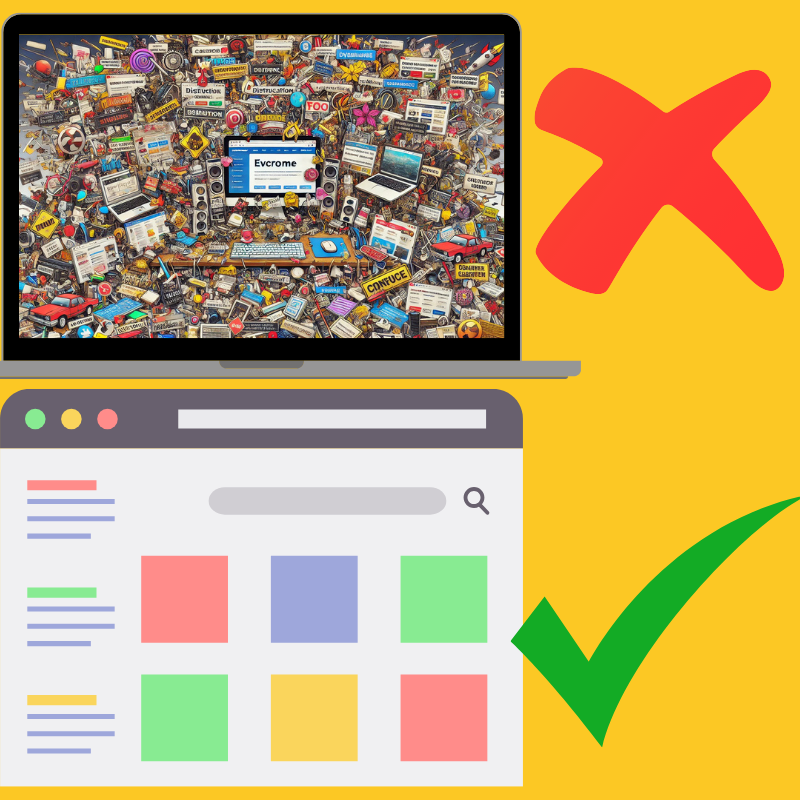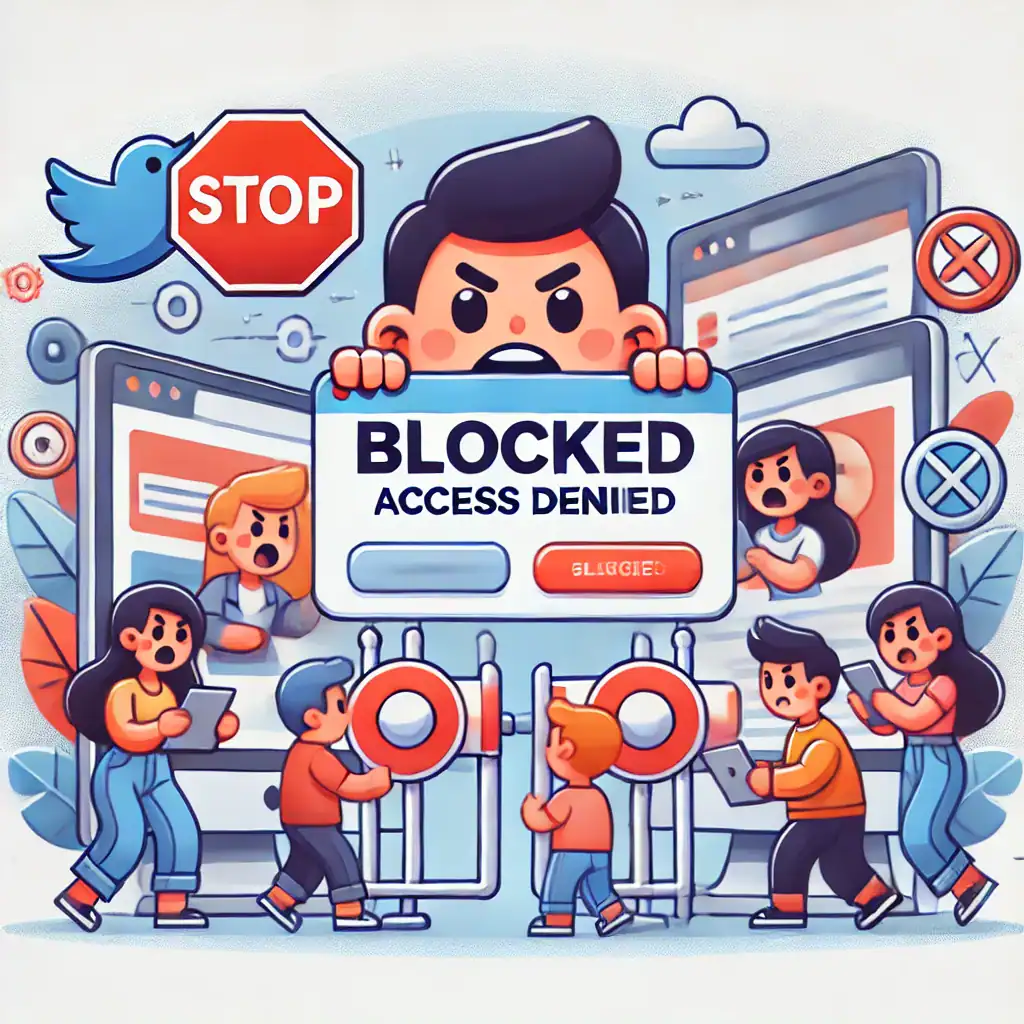When you’re building your website, first impressions count. Visitors decide in seconds whether they’ll stay or go, so it’s essential to make sure your homepage welcomes them in the best possible way.
A simple, tidy design invites curiosity and keeps people around longer, while a cluttered page might drive them away. But don’t worry, designing a great website doesn’t have to be hard.
Let’s walk through some easy, beginner-friendly tips to improve your website’s design
1. Keep It Clean and Simple
It’s tempting to add lots of features, but simplicity is often the best approach.
A neat, uncluttered design makes it easier for visitors to find what they need without feeling overwhelmed.
Aim for a simple layout with clear headings and space between sections. This will make your site easier to navigate and more inviting to your visitors. Remember, less is often more!
This is one of the most effective tips to improve your website’s design..

2. Make Sure Your Site Is Easy to Navigate
Your website’s navigation is like a map that helps people find their way around. Make sure the menus are clear and straightforward. Visitors should be able to find what they’re looking for in just a few clicks. Avoid complicated menus with lots of subcategories. Instead, keep it simple—think of it like a map of your favourite café, where everything is easy to find.
Also, don’t forget about mobile optimisation. More people are browsing on their phones these days, so your site needs to look just as good on a small screen. If it doesn’t, those visitors won’t stick around.
Improving navigation is one of the key tips to improve your website’s design.
3. Pay Attention to Visual Hierarchy
Visual hierarchy sounds fancy, but it’s just about guiding your visitors’ eyes to the most important parts of your site first. This means making sure your headlines stand out and your call-to-action buttons (like “Sign Up” or “Learn More”) are easy to spot. A strong headline is like a friendly handshake—it sets the tone for everything that follows.
To help your visitors understand what to do next, make sure your buttons or links are easy to spot. A great headline and clear CTAs will encourage your visitors to keep exploring your site.
4. Use Colours, Fonts, and Images Wisely
Colours, fonts, and images play a huge role in how your site looks and one of the quickest tips to improve your website’s design.. Here’s how to use them effectively:
- Colours: Choose a colour scheme that fits your brand and is easy on the eyes. Too many colours can make your site feel chaotic, so stick to a simple palette that complements your content.
- Fonts: Your fonts should be easy to read. Stick to a couple of fonts that match your brand’s style, and avoid using too many different ones. Make sure the text size is large enough for everyone to read comfortably.
- Images: High-quality images can make your site more attractive, but be careful not to overdo it. Too many images can slow your site down. Choose pictures that support your content and help tell your story. And remember, optimise your images so they load quickly!
5. Make Your Site Accessible to Everyone
It’s important to make sure your website is accessible to all users, including those with disabilities. This means adding things like alternative text for images (so screen readers can describe them), and making sure people can navigate your site using just a keyboard if needed. These small steps make a big difference in how many people can use your site, and they show that you care about all of your visitors.

6. Include Interactive Features
Interactive elements on your site can keep visitors engaged. This could be things like a chatbot that answers common questions, or animations that add a bit of life to your pages. But be careful not to go overboard—these features should enhance the experience, not overwhelm your visitors. If you make the experience more enjoyable, your visitors are more likely to stay longer and engage with your content.
7. Prioritise Fast Load Times
Nobody likes waiting for a website to load, so speed is crucial. If your website takes too long to open, visitors will probably leave before they even get the chance to explore. To improve speed, make sure your images are optimised and avoid adding unnecessary features that might slow things down. A fast-loading website helps improve your users’ experience and also boosts your rankings on search engines.
8. Test Your Site
It’s a good idea to test your website before it goes live. Ask friends or family to try out the site and see if they can find what they need. Get feedback on the layout, navigation, and design.
If something isn’t working, make changes before you launch your site to the public. This can save you time and help you avoid mistakes that might frustrate users later on.

9. Make Sure Your Calls to Action (CTAs) Stand Out
A call to action (CTA) is any button or link that encourages users to take the next step, like signing up for your newsletter or checking out a product. Make sure your CTAs are clear and easy to find. They should be visually distinct, with a strong, action-oriented message. CTAs like “Get Started” or “Learn More” give users a clear direction and guide them through the next steps.
This is one of the most practical tips to improve your website’s design
10. Keep It Updated
Your website shouldn’t be a “set it and forget it” project. Keep your content fresh and update your site regularly. Whether it’s adding new blog posts, updating product details, or changing outdated images, an updated site shows your visitors that you’re active and engaged. Plus, search engines like Google prefer websites that are regularly updated, which can help improve your rankings.
More info on tips to improve your website's design
If you’re looking for extra support and beginner-friendly website training, I recommend checking out Wealthy Affiliate — it’s where I learned many of these skills and found a supportive community along the way.
And Finally…
Improving your website’s design doesn’t have to be a daunting task. By following these simple tips—keeping things clean and simple, focusing on user experience, and making sure your site is accessible—you can create a website that both looks great and works well.
What part of website design do you find most challenging? Do you have any design tips you’d like to share with others? Feel free to leave your thoughts in the comments below!
Here’s a little transparency: My website contains affiliate links. This means if you click and make a purchase, I may receive a small commission. Don’t worry, there’s no extra cost to you. It’s a simple way you can support my mission to bring you quality content.

